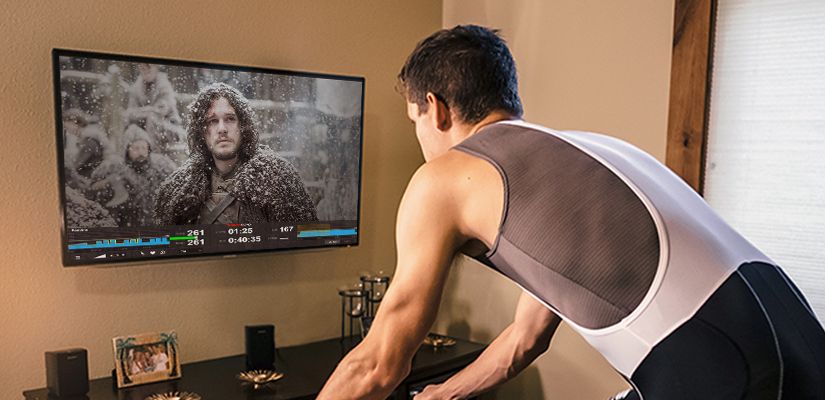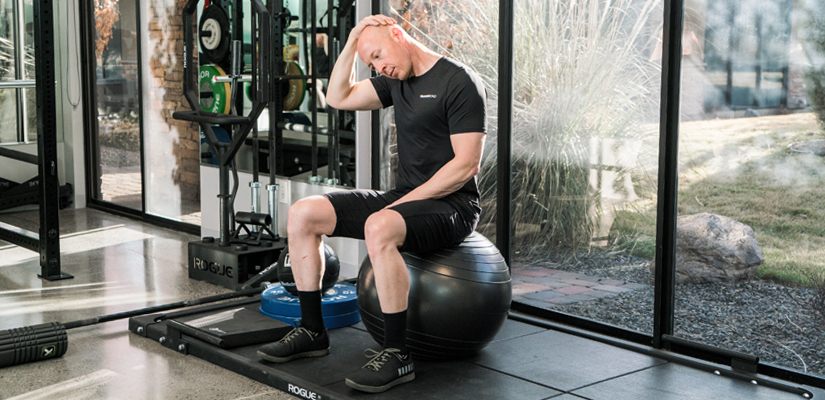How Much Faster Can You Get Watching TV?

Time and time again we’ve heard our users say they love watching their favorite TV shows while putting in time on the trainer. In honor of the new season of Game of Thrones returning to HBO this weekend, we decided to figure out just how fast TrainerRoad athletes can get while making their way through the upcoming — and previous — seasons of GOT.
To do this, we looked at four training plans catered to four different riders following low- or mid-volume plans. After crunching a few numbers and comparing these training plans with episode guides for GOT, here’s what we found.
Game of Thrones
Believe it or not, the GOT pilot episode aired all the way back in April of 2011. Since that time, 50 episodes have aired on HBO. At about 60 minutes per episode, that’s a grand total 50 hours of television. If you include the upcoming episodes in Season 6, it’s a whopping 60 hours of GOT.
Here’s how far you can expect to get through each of the following training plans while you watch Game of Thrones, along with the type of fitness you can expect to gain after completing each phase and season.
Road Racer
This plan for road racers is designed for new or novice riders who have a few hours to train each week. As a road racer, you’ll face long climbs, constant flurries of attacks and counterattacks, breakaways and more — all of which you’ll train for with this plan. Overall, this plan will build sprint and anaerobic power while improving your threshold.
Expected Progress
At this point, you will have benefited from significant fitness gains and increases in FTP from threshold and VO2 max workouts, as well as improved form work and pedaling mechanics.
Expected Progress
Reap the benefit from training towards VO2 max workouts that will have enhanced your aerobic capacity. You’ll also have increased your training threshold to balance out VO2 max training during this low-volume training block.
Expected Progress
While you won’t get to this phase watching GOT, you can expect to focus on increasing sprint, anaerobic and VO2 max power while maintaining strength and endurance to succeed in your road race.
After watching all six seasons of GOT with this plan, you will have made it about halfway through your Build Phase. At this point, you will have seen significant progress in your fitness. As the phase comes to an end, you’ll be ready to compete in B-level races.
Olympic-Distance Triathlete
This plan is great for riders looking to move up from the sprint distance and grow their international-distance capabilities. You’ll work through specialty blocks that incorporate efficient and effective training with the mid-volume schedule, devoting more hours per week to training than the low-volume plan.
Expected Progress
Once you’ve become familiar blending swimming, running and cycling training, you’ll have set a solid foundation of fitness to move forward toward more specific triathlon training.
Expected Progress
After completing this phase, you’ll benefit from an increased training threshold and more experience handling high doses of discomfort that you can expect closer to your event.
Expected Progress
Working to squeeze as much as possible out of your last weeks of training, you’ll have experienced high-capacity maintenance training for long periods of time alongside pacing practice to prevent you from burning out in your event.
Given the lower number of hours in the Base Phase in this plan, you will have completed the majority of this training plan in six seasons of GOT. You will have effectively established a base level of fitness, grown that fitness and started specialized training to prepare for the race demands of an Olympic-Distance triathlon. With the first two phases completed, you should also be ready for B-level races as long as they don’t interfere with preparation for your peak event.
XC MTB
This plan emulates the unrelenting nature of XC MTB riding and racing. You’ll work through anaerobic, VO2 max and sweet spot intervals — often with rapid transitions — to prepare for your main XC race. The low-volume nature of this plan is perfect for athletes with tight schedules who have fewer hours to devote to training each week.
Expected Progress
Aside from the significant fitness gains and increases in FTP from threshold and VO2 max training, improvements in your form work and pedaling mechanics.
Expected Progress
After your Build Phase, you’ll see Improvement in your aerobic threshold from VO2 max workouts with less emphasis in endurance work.
Expected Progress
Although you won’t complete this phase watching GOT, this Specialty block will prepare you for race day by maintaining your peak fitness and improving your form work.
Century Rider
This plan focuses entirely on building a higher level of muscular endurance for hours at a time — similar to what you’ll experience in a Century race. The workouts primarily focus on VO2 max and Sweet Spot efforts with occasional strength-endurance workouts to build sustained power needed to excel in long races like this. Unlike other plans we’ve listed, this Century plan incorporates the Traditional Base approach. That being said, this phase is primarily geared toward very elite athletes or those recovering from an injury who want to avoid high-intensity intervals.
Expected Progress
After a good amount of form work, pedaling drills, power sprints, force intervals and hill simulations, you will have established a solid base of fitness via this low-intensity approach.
Expected Progress
While you won’t get past the Base Phase watching GOT, this block is all about emphasizing sustained power above all else. You’ll focus on strength-endurance work, lactate-tolerance intervals and a healthy dose of maximum-VO2 max intervals.
Expected Progress
Workouts include VO2max and Sweet Spot efforts with occasional Strength-Endurance workouts to build sustained power needed to excel in your event.
Unique from other training plans, this one includes the Traditional Base Phase instead of Sweet Spot Base. As a result, all of your GOT time will be spent in the Base Phase. However, you’ll still reap the benefits the Traditional Base approach provides by training for longer hours with lower intensity. Depending on how you feel at this point in your training, you should be ready to compete in C-level events.
Overall takeaway: Each training plan mentioned above consists of different amounts of training hours, so your GOT progress will differ depending on what type of event you’re preparing for. However, you can still make significant training progress by completing just the first or second phases.
Other Entertainment Options Beyond Game of Thrones
GOT is just one of the seemingly endless entertainment options you can use while you train. As we just noted, some training plans are significantly longer than the entire GOT series. When that’s the case try incorporating other entertainment options to cover your remaining training hours each week. Other TV shows, movies, YouTube videos, music or educational podcasts — like the Ask a Cycling Coach podcast — all make for great options to supplement your training. And here’s another one for you: if you haven’t already, watch our cycling short film titled “The Chase” the next time you jump on the trainer. It just hit over 50,000 views on YouTube!
These are just a few examples of how you can incorporate your favorite forms of entertainment while using TrainerRoad. Whether you’re binge-watching your favorite Netflix shows or saving your Sunday workout for the new GOT episode, you’re in charge of what you watch while you train.
What entertainment do you use while working hard on the trainer? Let us know in the comments below! Also, if you want to know more about any of the training plans we mentioned above, you can take a look at all 80+ structured plans we have available.
